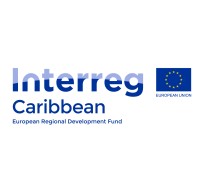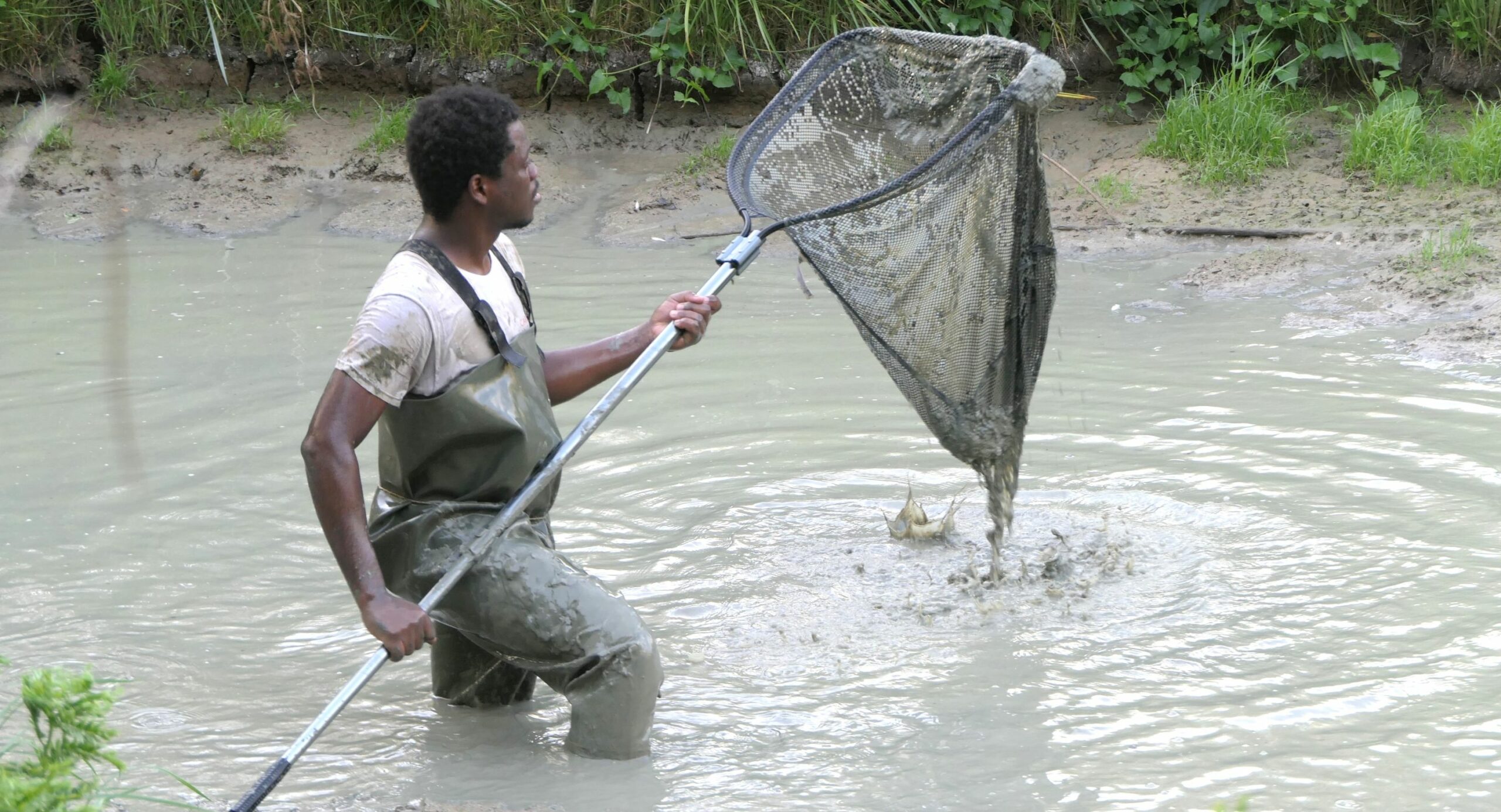Freshwater turtles may seem harmless, but some species are nonetheless invasive and potentially dangerous for local biodiversity. This is the case for two species in the West Indies: the Antillean slider (Trachemys stejnegeri), native to Puerto Rico, and the Yellow-bellied slider turtle (Trachemys scripta), native to the United States. To better understand the demographic parameters and ecological habits of these species, a three-week field mission was organized in Martinique.
Jeffey Mackenzy Paul, currently a PhD student, is a specialist in turtles of the genus Trachemys, which he studies as part of his research. Christopher Cambrone, coordinator of the MERCI project, has extensive experience in capture-mark-recapture techniques. The two young researchers, supported by the association Caribaea Initiative in charge of the MERCI project, were supported in the field by Kévin Urvoy, who works on Invasive Alien Species at the OFB (French Office for Biodiversity).
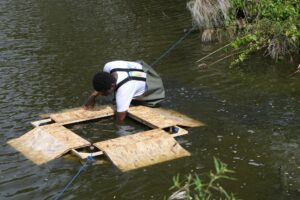
Removal of turtles captured in the basking traps
The mission was conducted in two steps. The first week was devoted to the preparation of the field work, in particular with the manufacture of traps adapted to turtles (the “basking traps”) and that of platforms allowing their observation. Over the next two weeks, the young researchers sampled three ponds in Martinique. The traps captured 16 turtles. Each of them was measured (length and width of the carapace and plastron, carapace height, body mass), photographed with a standardized method using a mobile photo studio, and specific observable characteristics such as the colour of the temple, the colour of the iris or the shape of the carapace were noted. These characteristics are used to recognize the species, or hybrids, and their determination will then be confirmed by genetic analysis of saliva and blood samples taken at the same time.
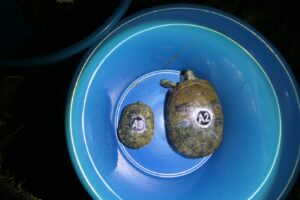
Turtles were marked to recognize individuals
To better understand the demographic parameters of the species in the ponds studied, the turtles were marked using a tag with a unique code placed on their shell. The observation platforms were then deployed in the three ponds and will remain in place until the end of the summer. These platforms are equipped with a camera to photograph the shell of individuals resting below. The photos will then be analysed to estimate the size of the populations of the ponds, and to better understand the activity of the turtles.
To learn more about the feeding habits of invasive turtles, 23 individuals were also captured using dip nets. The analysis of their stomach content will provide a better understanding of their impact on native biodiversity.
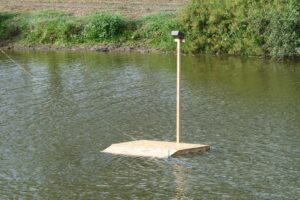
Resting platform with a camera
Although the mission is completed, the work is no finished. Photos are still taken in the field thanks to the platforms and tissue samples need to be analysed. Jeffey and Christopher are satisfied with the work carried out during these three weeks, despite things not always going as planed in the field. Among the frustrations is the difficulty of capturing turtles in certain ponds. Christopher recalls: “The limited number of individuals captured in these ponds is not due to the fact that there were no turtles, because there were turtles. We have seen them several times on our basking traps, but they did not fall into the trap! “. This intriguing phenomenon could be due to different topography between the sites, especially in terms of resting places for the turtles, or to behavioural differences between the turtles. According to Christopher, “the Martinican turtles are not easy and tried to bite us at the slightest opportunity”. Jeffey and him would still be happy to go back to the field and are already planning another mission at the end of the year to continue the captures.
Read the mission reports (PDF)
Photos: Christopher Cambrone
The MERCI project is co-financed by the INTERREG Caribbean program under the European Regional Development Fund
